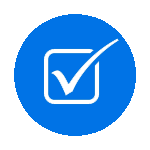Chapter 12. Advanced Internal Auditing Topics: Analytics, Agile Auditing, and Continuous Auditing
Introduction

This chapter ventures into advanced internal auditing topics, focusing on integrating analytics, applying agile methodologies, implementing continuous auditing, and exploring emerging trends and technologies in the audit field. It is designed to equip internal auditors with the insights and tools needed to navigate the evolving landscape of internal auditing, enhancing audit quality, efficiency, and value through innovative approaches and technologies. It introduces the concept of data analytics, its critical importance in the audit process, and the various types of analytics—descriptive, diagnostic, predictive, and prescriptive—that can transform auditing practices. Challenges associated with adopting audit analytics and success stories highlighting the transformative power of analytics in auditing are addressed.
Following the analytics discussion, the chapter delves into the principles of agile auditing. It explains the agile methodology and its applicability to auditing, emphasizing fundamental principles such as flexibility, efficiency, and stakeholder engagement. Continuous auditing is the next focus area, where the concept and scope of continuous auditing are defined, differentiating it from traditional auditing methods. The chapter discusses the technology requirements for constant auditing, the steps and considerations in designing a continuous auditing program, and the importance of real-time risk assessment and control testing. Challenges in implementing continuous auditing and future directions for integrating continuous auditing with continuous monitoring are considered, offering a forward-looking perspective on this innovative auditing approach.
Finally, the chapter addresses the future of auditing, highlighting the evolving role of the auditor in the digital age and emerging technologies such as artificial intelligence (AI), machine learning, and blockchain that are shaping the future of auditing. The rise of cybersecurity auditing as a specialized field, the ethical and professional implications of new technologies, and the skills and competencies required for next-generation auditors are discussed. Global trends, the impact of international standards and practices on auditing, and predictions for the audit function of tomorrow are explored, envisioning the future of internal auditing in a rapidly changing world.
 Learning Objectives
Learning Objectives
By the end of this chapter, you should be able to
- Understand and apply various types of data analytics to enhance audit accuracy, efficiency, and effectiveness.
- Implement agile auditing principles, focusing on flexibility, efficiency, and stakeholder engagement to improve audit responsiveness and value.
- Design and implement a continuous auditing program, leveraging technology for real-time risk assessment and control testing.
- Analyze the impact of emerging technologies and global trends on auditing, preparing for future challenges and opportunities in the audit profession.

